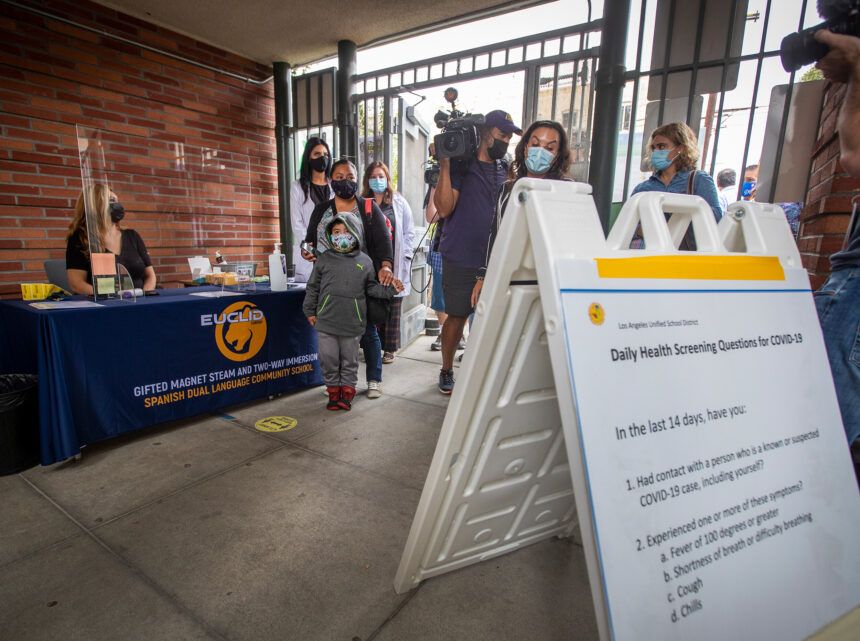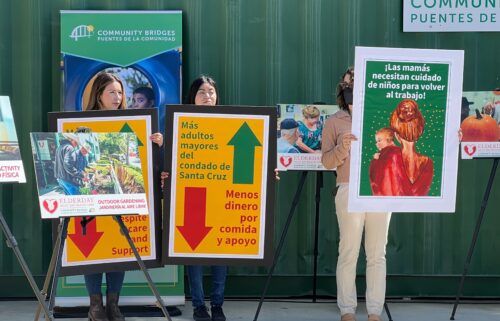As Covid-19 cases rise among teens, so do vaccinations, CNN analysis finds
By Jacqueline Howard, CNN
More adolescents have received Covid-19 vaccinations in the past two weeks — representing about a fifth of all new vaccinations in the United States, data suggest.
Public health experts call the increase in vaccinations good, but the cause may be grim.
The rise in Covid-19 vaccinations among adolescents parallels an increase in Covid-19 cases and hospitalizations, mostly fueled by the Delta variant — leading some experts to speculate that parents who were once hesitant to get their children vaccinated are now reconsidering their decision after seeing more young people falling ill.
Over the course of the summer, the Covid-19 case rate among adolescents grew nearly five times. In June, there were 3.4 cases per 100,000 adolescents ages 12 to 15, which nearly tripled to about 9 cases per 100,000 adolescents in July and up to 14.6 cases per 100,000 adolescents in August, according to data from the US Centers for Disease Control and Prevention, last updated on Monday.
At the same time, that age group represented 30.9% of people receiving at least one dose of Covid-19 vaccine in June, rising to 38.9% in July and 44.9% in August. Children ages 12 to 15 account for just 5% of the population overall.
The share of fully vaccinated people who are ages 12 to 15 also saw an increase, climbing from 21.5% in June to 28.7% in July to 32.2% in August.
Among older teens, ages 16 and 17, the average number of Covid-19 cases per 100,000 people increased from 4.27 in June to 11.37 in July to 17.28 per 100,000 in August, the CDC data show, as of Monday.
At the same time, that age group represented 43.5% of people receiving at least one dose of Covid-19 vaccine in June, rising to 49.7% in July and 54.2% in August. The share of fully vaccinated people who are in that age group climbed from 34.6% in June to 40.1% in July to 42.7% in August.
This means there are still millions of adolescents heading back to school this month unvaccinated, but they are a dwindling group within the roughly 25 million 12- to 17-year-olds in the United States.
Overall, about 8 million or 32% of all adolescents ages 12 to 17 are fully vaccinated against Covid-19.
‘They realize that it’s necessary to protect them’
Ishaan Mishra, 13, remembers being among some of the first US teenagers to wait in line at a local Walgreens in San Francisco for the vaccine in May. That month, the US Food and Drug Administration authorized the Pfizer/BioNTech coronavirus vaccine for adolescents as young as 12.
“We got it relatively early when it was released and there were definitely a few other teenagers, so people above the age of 12 there waiting in line, and I was overall definitely excited,” Ishaan told CNN on Tuesday, remembering the moment.
“It helped with my friends feeling safer interacting with me,” he said about getting vaccinated. “I’d get to see them more.”
Now, several months later, Ishaan will be starting 8th grade on September 1, and he said that many of his peers still have positive opinions about the Covid-19 vaccine.
“They realize that it’s necessary to protect them,” Ishaan said.
Some of his friends and he worry about possible breakthrough cases of Covid-19 due to the Delta variant, he added. But being fully vaccinated, Ishaan knows the vaccine provides protection against severe disease if a breakthrough case were to happen.
“I believe that it is very important to be vaccinated before the school year starts,” Ishaan said. “There’s always a possibility that you can get Covid-19 and you want to protect yourself as much as possible.”
When Ishaan was vaccinated in May, it was his mother, Dr. Monica Gandhi, a professor of infectious diseases at the University of California, San Francisco, who took him to Walgreens for his first dose.
Before taking Ishaan back to the pharmacy for his second dose, Gandhi said that she first waited until the June 23 ACIP meeting to hear the results of data reporting myocarditis cases in young males who had received the vaccine.
ACIP is the CDC’s Advisory Committee on Immunization Practices, a group of medical and public health experts that develop recommendations on how to use vaccines.
Vaccinations for 12- to 15-year-olds started out high soon after May 10, when the FDA authorized the two-dose Pfizer/BioNTech vaccine for that age group. In less than one week, 600,000 children in that group were vaccinated, according to data from the CDC.
But the numbers took a nosedive on May 23, the day after media articles appeared around the possible link to the vaccine and myocarditis, or inflammation of the heart, in young people. Most cases of myocarditis were mild and typically resolved quickly.
In June, the FDA added a warning about the risk of myocarditis and pericarditis, inflammation of the tissue surrounding the heart, to the fact sheets for both the Pfizer and Moderna vaccines.
The CDC data showing the myocarditis cases to be mild were reassuring, Gandhi said, and so she took Ishaan for his second shot in June, about six weeks after his first dose.
“We had a good experience,” she said, adding that Ishaan experienced only “mild side effects such as fatigue, arm soreness and mild fever after the second shot.”
What’s driving the increase in vaccinations?
Even though vaccinations among adolescents plunged following the myocarditis reports, data suggest vaccinations are now back on the rise.
“In my opinion, and from what I have seen amongst my teenage patients, many are eager to now get vaccinated because they understand the urgency of doing this before the school year starts,” said Dr. Priya Soni, assistant professor of pediatric infectious diseases at Cedars-Sinai Medical Center in Los Angeles.
“This reasoning, combined with the understanding that the Delta variant is propelling this pandemic into another surge, they are now more eager than ever to rely on what science has taught us time and time again: vaccines work,” Soni said. “Ultimately in weighing the pros and cons of starting the school year without the protection against Covid-19, many teens and parents are taking the plunge that sets them up for the best chance at a successful, healthy school year.”
About 1 million adolescents ages 12 to 17 so far have completed at least one dose of Covid-19 vaccine in the past two weeks, representing around 19% of all people in the US who have received at least one shot recently, according to CDC data.
“It is hard to know what is driving the increased vaccinations but likely is related to the recognition among young people that the highly transmissible Delta variant is driving another significant surge, especially among younger individuals who are less likely to be vaccinated,” Dr. Yvonne Maldonado, chief of the division of infectious diseases in the Department of Pediatrics at Stanford Medicine and a committee chair with the American Academy of Pediatrics, wrote in an email to CNN on Monday.
Maldonado called the recent rise in Covid-19 vaccinations among adolescents “promising.”
“It is always encouraging to see populations seek the benefits of safe and effective vaccines for COVID-19 as well as for other infectious diseases. While we do still have a way to go to increase our vaccination numbers, this is a promising trend,” Maldonado said.
“I do think that the much anticipated reopening of schools is one factor that is encouraging families to get all of their eligible members to be vaccinated,” she said. “There is no evidence, however, that school openings are driving new COVID-19 infections. These are a reflection of the highly transmissible infections occurring among unvaccinated adults in community settings.”
The recent rise in Covid-19 cases and hospitalizations, fueled by the Delta coronavirus variant, appears to be driving vaccinations in younger people, Gandhi said.
“Yes, I think the Delta wave and the increasing concern regarding children safety, especially as schools re-open, is driving this willingness of parents to get their children vaccinated or the adolescents themselves,” said Gandhi, who also serves as director of the UCSF Center for AIDS Research.
“I think this is very encouraging as the group most lagging in vaccinations was younger individuals, including adolescents,” Gandhi said. “The Delta variant has made younger people getting vaccinated even more urgent and I think it is encouraging to see a full 20% of those who completed vaccinations in the last 14 days being adolescents.”
Ishaan, Gandhi’s 13-year-old son, hopes that more people in his age group who haven’t been vaccinated yet, roll up their sleeves soon.
“This is the most effective way of stopping the pandemic because masks, they work, but they can’t protect you from everything,” Ishaan said.
“The vaccine is generally like 94% effective,” he said. “So definitely, that is one of the best options you can get when trying to protect yourself and the community from Covid-19.”
The-CNN-Wire
™ & © 2021 Cable News Network, Inc., a WarnerMedia Company. All rights reserved.
CNN’s Deidre McPhillips contributed to this report.




